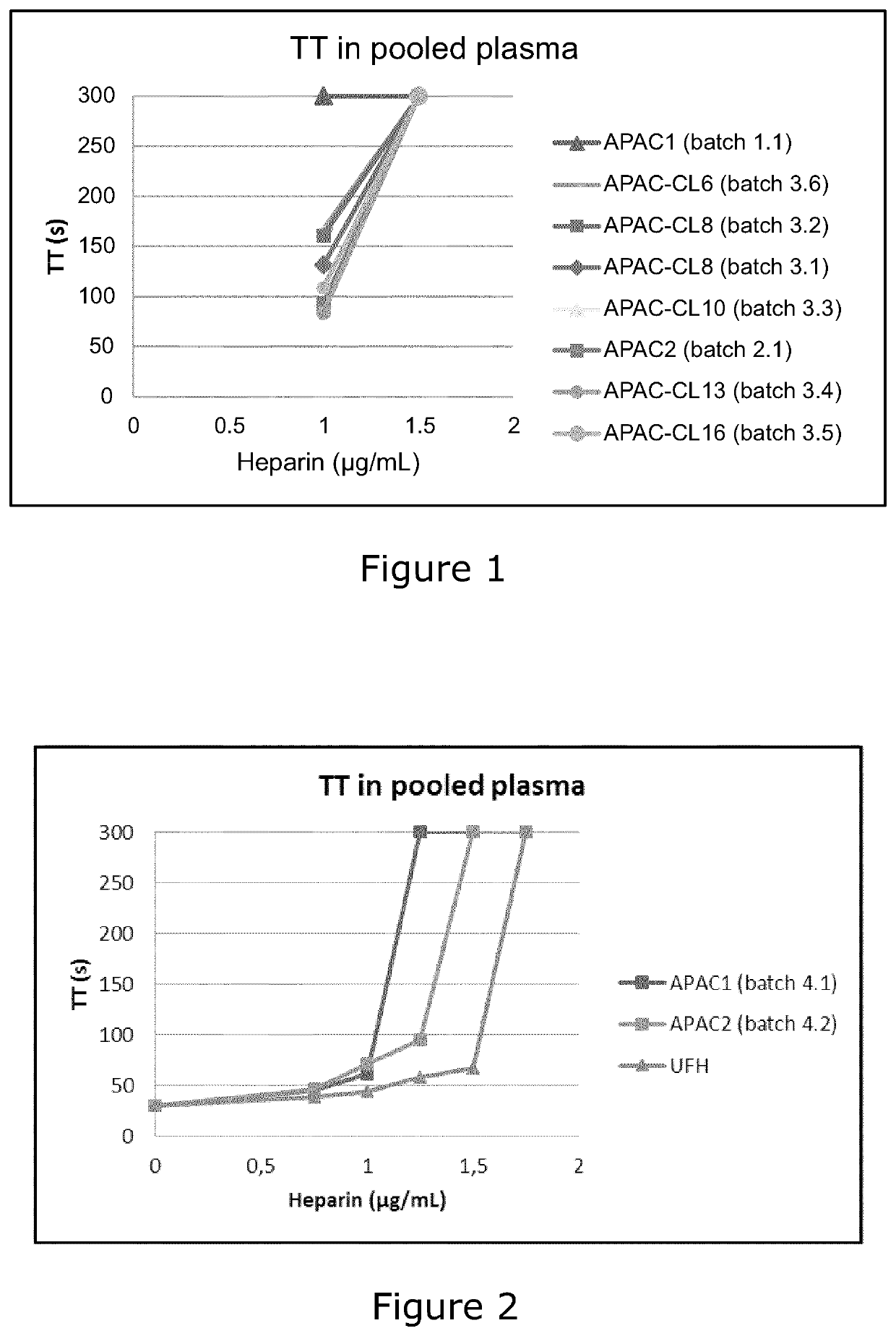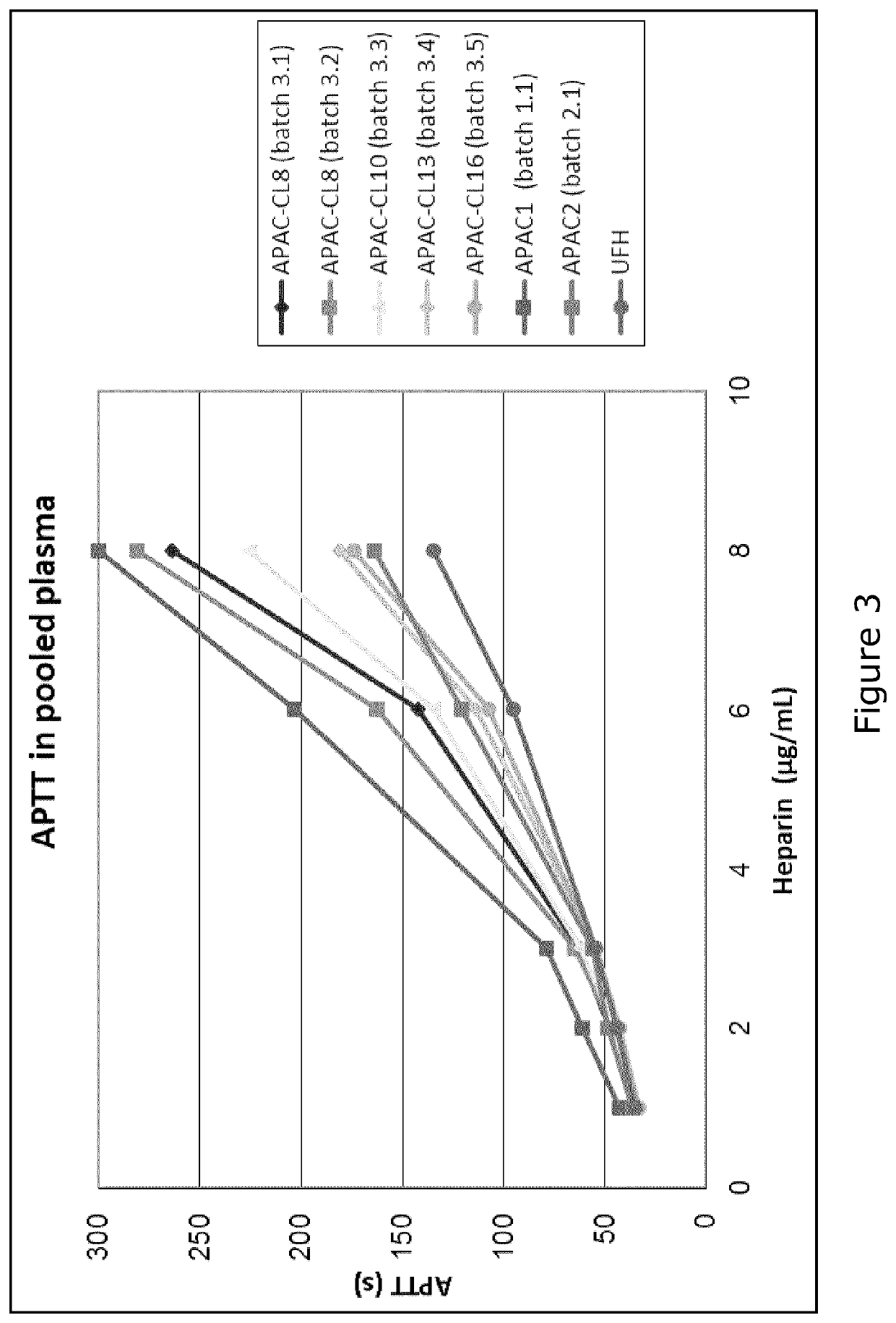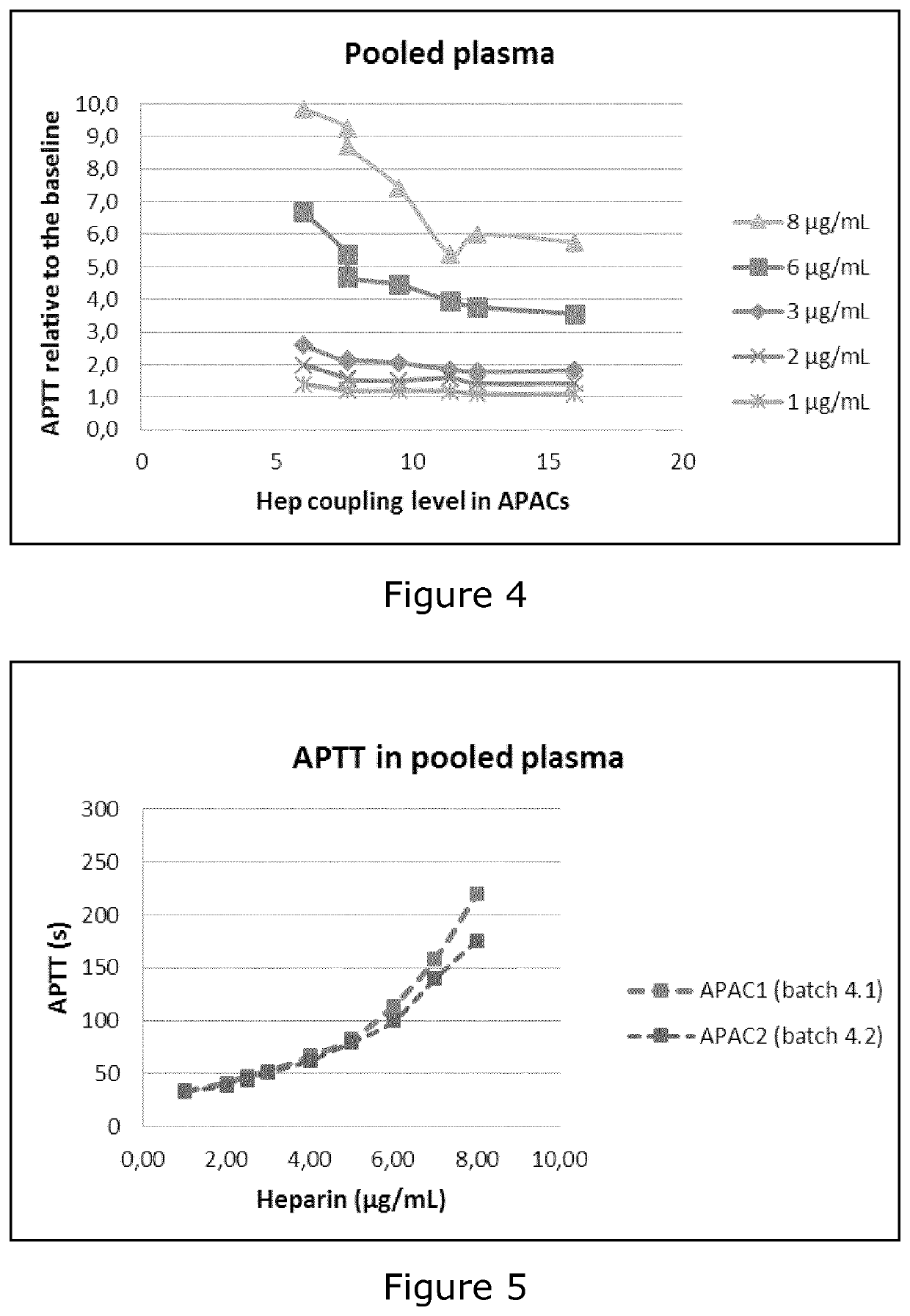Therapeutic APAC molecule comprising heparin conjugated to a plasma protein
a technology of heparin and plasma protein, which is applied in the direction of drug compositions, peptide/protein ingredients, extracellular fluid disorder, etc., can solve the problems of increasing the risk of blood clots, insufficient alone to prevent platelet-driven thrombotic complications in arteries, and the traditional systemic anti-coagulation treatment of thrombosis is often of limited
- Summary
- Abstract
- Description
- Claims
- Application Information
AI Technical Summary
Benefits of technology
Problems solved by technology
Method used
Image
Examples
Embodiment Construction
Methods
[0123]Conjugation
[0124]Unfractionated heparin (Hep) chains were conjugated to Human Serum Albumin (HSA) through disulfide bridges created by by two alternative cross-linkers and reactions routes using:[0125]i) hetero-bi-functional cross-linker 3-(2-Pyridyldithio)propionic acid N-hydroxysuccinimide ester (SPDP). For the conjugation free amines on Ser at the Hep linker region and Lys on HSA were utilized. Hep and HSA were modified in separate reactions into sulfhydryl (—SH)—and pyridyl dithiol(-PDP)-derivatives, respectively. In the final conjugation reaction the pyridyldithiol-group of HSA reacted with sulfhydryl group of Hep resulting in the formation of a disulphide bonded complex and the release of pyridine 2-thione.[0126]ii) homo-bi-functional cross-linker 3,3′-Dithiodipropionicacid di(N-hydroxysuccinimide (NHS)-ester) (DTSP). For the conjugation, free amines on Ser at the Hep linker region and Lys on HSA were utilized. Hep was first modified into N-hydroxysuccinimide (NHS...
PUM
 Login to View More
Login to View More Abstract
Description
Claims
Application Information
 Login to View More
Login to View More - R&D
- Intellectual Property
- Life Sciences
- Materials
- Tech Scout
- Unparalleled Data Quality
- Higher Quality Content
- 60% Fewer Hallucinations
Browse by: Latest US Patents, China's latest patents, Technical Efficacy Thesaurus, Application Domain, Technology Topic, Popular Technical Reports.
© 2025 PatSnap. All rights reserved.Legal|Privacy policy|Modern Slavery Act Transparency Statement|Sitemap|About US| Contact US: help@patsnap.com



